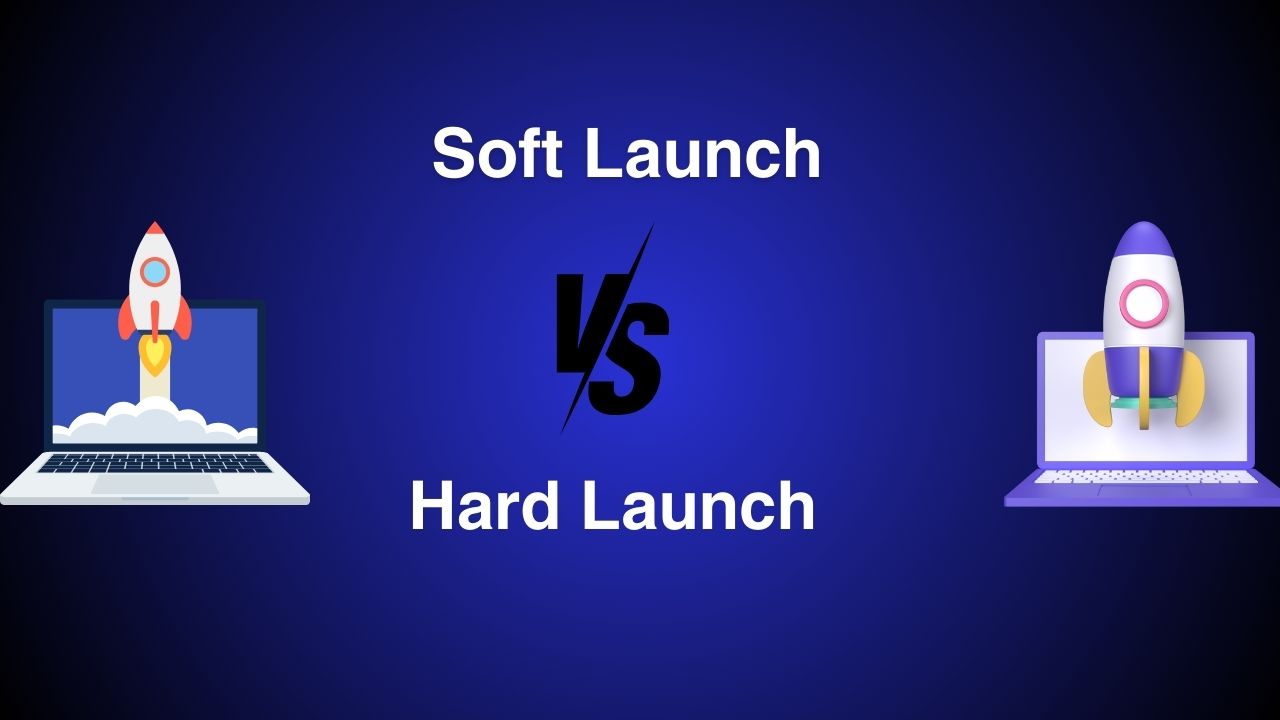While making software, one of the most stressful parts is waiting for the product to be fully released. This is especially true for companies that are making software for the first time.
It’s true that a launch can be one of the most stressful parts of making software. In fact, only 11% of people who answered a recent Gartner survey thought that their goods met all the internal standards that were set before they went on sale.
One way to minimize stress and doubt during a product launch is with a soft launch. By doing this, you can gather data in an controlled market environment before going public with your new offering. By testing data within this controlled setting, you can use what you learn to improve it before going forward with sales to everyone.
Softrobo will explain what “soft launch” means here, so that you and your team can come up with a comprehensive soft start plan for your business. When the time comes to launch it, Softrobo’s experienced software engineers may come in handy to make things go smoothly.
What is a Soft Launch?
A soft launch is when a finished product comes out early to a small group of people with little marketing.
Soft starts are common in restaurants as well as other retail establishments which is why new stores typically have”soft openings. “soft opening.” To check for any issues that could arise before their grand opening day.
In this stage, times, menu items, hours, and availability might be restricted so that teams can tackle issues quickly. Soft openings have proved to be extremely efficient in other fields such as software development.
As success in mobile app development relies heavily on satisfied customers, developers may opt for a “soft launch” to gauge its success with small groups of their target audience and receive feedback before publishing it to all app stores.
Another easy way for your business to do A/B testing is to do a soft launch. In this test, two copies of a product are put side by side to see which one works better.
Soft launching a new version of software to a small group of users will provide two copies running at once; once this step has been taken, A/B testing can begin to determine whether its new features really make your app better.
Soft Launch vs. Hard Launch
When discussing soft starts, it’s also essential to acknowledge hard launches – which represent another form of product launch.
A hard launch means putting out a product to all of your target customers at once. When you have a hard launch, all the testing that has already been done by testers is thought to be enough to bring your software to market fully.
From what we’ve talked about so far about soft-launching your product, going straight to a hard launch may seem like a bad idea. But there are times when this method can be good for your business. If you have a well-known product with a loyal following of users, the excitement of a hard launch can help your business make money quickly.
People say that Apple is the master of the hard launch. A lot of work went into selling the iPhone 6 and 6 Plus, and over 10 million units were sold during the September 2014 weekend release. The next year, they sold 13 million 6s and 6s Plus units in their first weekend on sale, which was more than this number.
Soft Launch vs. Beta Testing
When you learn about soft starts, beta testing is another important idea to keep in mind. Beta testing and soft launching are both related tasks that are sometimes mixed up.
Beta testing is the last round of testing that is done by real people who will be using the product to find any bugs or problems with how it works before it is released.
Beta testing and soft releasing are not the same in terms of what they do and why they do it. Beta testing is only for developing software and can be either closed (only a small group of users chosen by the test team) or open (anyone interested can use the software and give feedback).
Who is Involved in a Soft Launch?
As was already said, a soft launch is not led by developers like test events are. Instead, a soft start should be run by more than one group on your team working together.
Development and Technical Teams
On any soft launch events, your development team should always be present. Your test and quality assurance teams can determine whether your software has been rigorously tested to the point that it can be released for public consumption or first public usage.
Having a big group of real users will let you test the UX of your software in the most realistic way possible, even if your team’s testing steps find and fix all bugs.
Aside from changes to the user experience, customer input from a soft launch may help your team find ways to improve the back end. When you bring in new users from the soft launch, they may give you high-level feedback on how the product works that could help you find bugs in the code.
Marketing Team
A soft start is helpful for more than just your technical staff. The soft launch of any product should also include your marketing team to make sure it’s well planned, carried out, and learnt from.
The marketing plan for your business should affect how you do your soft start. Your marketing team can give you information like which target groups are the most likely to buy from you. Using this knowledge will help you make the best plans for your soft launch.
Your marketing team may be the first to solicit customer feedback during soft launch, since they manage your social media and email marketing.
It’s also possible that your marketing team will be the first to ask customers for feedback. They are the ones who will get direct feedback from soft launch users because they are in charge of your company’s social media and email marketing.
Many of the measures of success for the soft launch, like sales, will have to do with marketing. Also, data on new users and how they interacted with the software during the soft launch can help your marketing team improve the software’s strategy for making money without hurting any goals for user retention.
Additional Teams as Needed
For your soft start, you might need to bring in other teams sometimes. Your IT infrastructure team might need to work with your development team to set up a different server for the soft launch of a new piece of software.
Software Soft Launch Readiness Checklist
You know what a soft launch is and who in your company should be involved with it. Now you need to figure out how ready you are for a soft launch.
You might think that a fully tested MVP and a general marketing plan are all that’s needed for a quiet launch. But for a soft start to go well, everyone involved needs to do a lot of planning.
You can use this soft launch plan to make sure your team is ready to launch your product in the right way:
- Who do you want to reach with the soft launch?
- Do we have the money and IT resources to carry out the soft launch?
- How are we going to look at the results of the soft launch and add them to our product?
Please keep reading to learn how these things on the checklist can help your team get ready.
1. Who do you want to reach with the soft launch?
One of the best things about a soft launch is that it lets you get real customer feedback that you can use to improve your software before the full release. Because of this, you should be very careful when choosing a market for your soft start.
At the beginning of the development process, your team should have chosen a good market for your end product. But for a soft start to go well, it should focus on smaller groups of people in this user base.
You and your team will need to figure out who your target customers are before you start planning your soft launch. Then you need to figure out how to get them to support a soft start.
If your company already has a software suite or wants to soft launch new features into a current product, it should be easy to find the right people to connect with for your soft launch.
On the other hand, you might be working on a product that isn’t normally something your business sells. The soft launch could also be a good time to test how well a new product does with groups of customers you don’t know well.
It doesn’t matter how you choose to define your soft launch target market; what’s important is that you set clear rules for that market. It should be easy to get a sense of any group or other factor in your soft launch user base.
It’s also important to keep track of user groups throughout the whole soft launch process. So, the marketing team can keep an eye on big trends and learn how to better reach these groups when the site goes live.
2. Do we have the money and IT infrastructure to carry out the soft launch?
Once your product is complete and you know who it will be sold to, ensure any internal issues have been rectified and sufficient server space has been allocated for its soft launch.
Any problems with the server should have been identified and fixed during testing, if at all possible. To facilitate an effective soft launch, if your company or product are newcomers to software development you may need to speed up server setup time in order to prepare.
Your team should ensure that as they enhance the soft launch plan, it remains financially feasible.
Soft launches may not require as much marketing, but your business still must connect with people and remain aware of what they think and say. Any testing conducted could lengthen development process and add costs beyond budget estimates.
3. How are we going to look at the results of the soft launch and use them to improve our product?
Together with your team, you need to decide how you will handle any results from the soft start before you actually do it.
Before the soft start, you should check to see if there are any problems with the front- or back-end of your software from a development point of view. This will not only stop scope creep, but it will also make it easier to act on customer comments.
Users won’t be giving your development team as much detailed information during this time as your test team did. They will instead give you input at a higher level. If you know about areas of worry that have already been set, this feedback will be easier to turn into code changes.
Before the soft start, your marketing team should also come up with some metrics that are worth keeping an eye on. These measures should be used to figure out how much your software is worth to a customer over the course of their lifetime (CLTV).
CLTV is the amount of money you think a new customer will make for your business based on how much they buy, how long they stay, and how healthy they are. To find CLTV, divide your average income per user by the rate at which users leave.
Average sales / Rate of churn = CLTV
Your marketing team should monitor metrics such as early retention rates, average income per paying user and conversion rates in addition to these numbers.
Any of the results that result from taking these measures should be used to increase profit, retain users and enhance CLTV.
Real-World Soft Launch Examples
A lot of time has been spent talking about possible soft starts. But some examples from real life might help you see how useful a soft launch can be for your software and your business as a whole.
Example of a Soft Launch: Gmail
As of January 2020, Gmail had 1.8 billion daily users around the world. It’s hard to remember a time when it wasn’t the best email service for consumers. While the service did have a soft start at first, it took almost three years.
Google started Gmail on April 1, 2004, but only people who were invited could use it. Anyone who wanted a Gmail account had to get one from someone who already had one. The prices of Gmail accounts on eBay at this time were often several hundred dollars each.
Google improved Gmail in 2005 to make it available to anyone with cell phone. On February 14th 2007, anyone could begin using the application.
Gmail’s protracted soft launch was an important milestone. Not only did it pique people’s curiosity for when the service would launch officially, but it gave developers more time to ensure all its features functioned flawlessly.
In 2004, it was a new idea to make an email service that worked like a web app and had focused ads built in. By releasing Gmail slowly at first, Google made sure everything was set up correctly. They ended up making a tool that changed the way people use email.
Example of a Soft Launch: Pokémon GO
Soft launches are an industry standard in mobile game production. Many game makers who wish to release full-length titles in the US often begin by first releasing them in Canada so that any issues with users may be rectified as quickly as possible.
The soft launch of Pokémon GO was one of the most well-known and successful for a mobile game.
On July 6, 2016, Niantic did a soft launch of the franchise-based mobile app in Australia, New Zealand, and the United States. The app would later be released all over the world.
By soft launching in these fairly big markets, Niantic was able to see if any changes to the servers or the way they make money were needed. It also helped build excitement for the wider launch.
Some things went wrong with this soft start, though. The game was released all over Europe the following week. The expected computer need wasn’t met by the high demand, and for a short time, the game was almost impossible to play.
As you work on your own soft launch, a well-known example like Pokémon Go can help you see the pros and cons.
Soft launches ensure customers’ happiness
As we’ve shown, a software soft launch is an integral component of any development team’s knowledge base. Though web and mobile app development teams use it frequently, its applications extend far beyond them.
Before the official launch, a soft launch is an invaluable opportunity to you and your team to adjust your product based on real customer feedback and give marketing teams invaluable test data about efforts to make money and retain customers that wouldn’t otherwise be available through any other testing method.
A soft launch can make or break your software if it’s not part of the right project and the right steps aren’t taken to prepare for and learn from it.
Need help with a job you have coming up? We’ve got you covered at Softrobo! Contact us right away.




